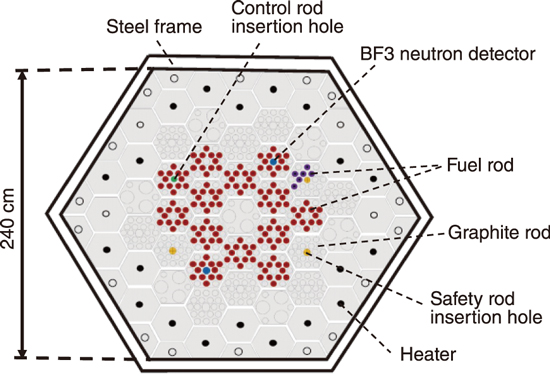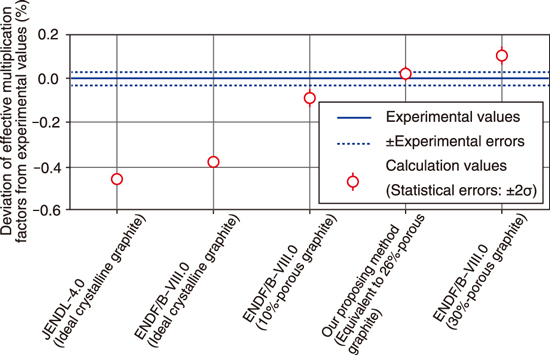
Fig.6-13 Cross-sectional view of the Very High Temperature Reactor Critical Assembly (VHTRC)

Fig.6-14 Comparison of the effective multiplication factors obtained by using the thermal neutron scattering law data stored in each library and by using our proposing method
In a design study for high-temperature gas-cooled reactors (HTGRs) using graphite as the moderator, it is important to accurately evaluate the behavior of thermal neutrons in core analysis because the criticality is maintained mainly via a fission chain reaction by thermal neutrons. It is necessary to quantitatively consider the interactions between thermal neutrons and low-frequency lattice vibrations of graphite crystals, which have energies as large as those of thermal neutrons.
To deal with the effects of such low-frequency vibrations, thermal neutron scattering law data are used. Until now, thermal neutron scattering law data for graphite have been evaluated for an ideal crystalline graphite, in which all the atoms are regularly aligned, but the actual graphite used in HTGRs is not an ideal crystal and comprises parts with many porosities. If the thermal neutron scattering law data for actual graphite porosity can be used, it will become possible to evaluate the thermal neutron behavior more accurately because the low-frequency lattice vibrations that contribute to the thermal neutron scattering increase near pores.
Recently, thermal neutron scattering law data corresponding to actual graphite, with graphite porosity as a parameter, were developed by Hawari et al. at North Carolina State University and were included in ENDF/B-VIII.0, the latest library of nuclear data in the US. However, these data are not sufficient because they only include graphite with 10% and 30% porosities, which do not necessarily match the porosity of the graphite used in actual HTGRs.
To address this problem, we proposed and developed a new method that allows users to freely specify the porosity of graphite and perform more accurate core analysis on HTGRs. If an exhaustive library were to be developed to cover all graphite porosities, the amount of nuclear data would be enormous, which is undesirable from the viewpoint of convenience. Therefore, to find a solution without increasing the amount of nuclear data, we focused on a method called the pseudomaterial method proposed by Conlin et al. at the University of Michigan. Originally, this method was developed to reduce the amount of nuclear data for the huge number of temperature points required in the neutronic thermohydraulic coupling analysis for light water reactors. This method utilizes nuclear data corresponding to two different temperature points and probabilistically represents the temperature point to be analyzed between them.
We thought that the thermal neutron scattering law data for graphite at two different porosity points could analogously provide a probabilistic representation of the porosity point to be analyzed between them. To demonstrate the validity of our proposed method, we calculated the deviation of the effective multiplication factors from the experimental results obtained in the past for Very High Temperature Reactor Critical Assembly VHTRC (Fig.6-13). From the results, we confirmed that the effective multiplication factor obtained by our proposed method is more consistent with the experimental data than the factors obtained from the conventional libraries (Fig.6-14).
(Shoichiro Okita)
<Previous: 6-6 | Next: 7 Research and Development of Fast Reactors>